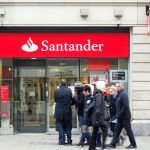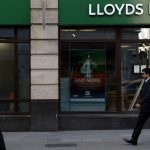September has a deserved reputation for being a troublesome month in financial markets.
It was, for example, the month in which Black Wednesday saw sterling ejected ignominiously from the Exchange Rate Mechanism in 1992 and the month in which Northern Rock collapsed in 2007.
By then, the global financial crisis was well under way, an unfolding disaster that reached its most frightening moment with the collapse of the US investment bank Lehman Brothers in September 2008.
Pound falls again as Truss and Kwarteng issue statement – economy latest
So it is a month in which all market participants, whatever asset class they trade, know they have to be on their guard.
It is unlikely that Liz Truss and Kwasi Kwarteng, both of whom worked in business before going into politics, would not have known this.
If they did not, the new prime minister and chancellor certainly do now, following a tumultuous week.
UK economy: Surge in mortgage approvals as home-buyers race to lock in loans, amid market ‘headwinds’ warning
Mini-budget: Do the sums add up after Chancellor Kwasi Kwarteng gives only half the story? | Paul Kelso
£1bn Serco pension scheme seeks loan from outsourcer amid markets turmoil
For most people who may not necessarily pay attention to events in financial markets, the wild gyrations have been best summed up by the pound, which even before Mr Kwarteng’s ultra-expansionary budget last Friday had fallen by 16% against the US dollar since the start of the year.
Sterling promptly tanked last Friday as investors took fright at billions of pounds worth of unexpected borrowing and finished the week at $1.0856.
The rout picked up pace in Asian markets in the early hours of Monday morning when most Britons were asleep, sterling plunging to a new all-time of $1.0382, a level surpassing even the $1.054 hit on 25 February 1985.
Please use Chrome browser for a more accessible video player
The pound rallied after London opened and continued to grind higher on Tuesday, with the Bank of England’s crucial intervention on Wednesday in the gilt market helping it to further gains that day and on Thursday, although it has sold off again today on news that Mr Kwarteng will not be bringing forward, as many would have liked, his medium term fiscal plan from 23 November.
Nonetheless, sterling goes into the weekend having clawed back the majority of losses it has racked up since the Chancellor’s mini-Budget.
The same cannot be said for gilts.
The yield (which moves in the opposite direction to the price) for government IOUs rocketed last Friday and continued to climb during the first half of the week.
Then came Wednesday and the Bank’s decisive move to buy what is eventually expected to be £65bn worth of 20 and 30 year gilts after those particular assets had been subjected to forced selling by pension funds after strains emerged due to a hitherto obscure part of the sector known as liability driven investing (LDI).
Yet the Bank’s intervention – restricted to 20 and 30 year UK government debt only – has only partially repaired the damage.
The yield on 2-year gilts (a good indicator of where the market thinks short term interest rates are heading) hit 4.761% on Tuesday morning – a level last seen in August 2008 – and at the time of writing was still above 4%.
To put that into context, before Mr Kwarteng began speaking last Friday, it was just under 3.5%.
These are huge moves by the standards of these assets.
Similarly the yield on the 10-year benchmark gilt, which had been just under 3.5% before the mini-budget, had blasted to 4.582% at one point on Wednesday before coming off slightly.
It remains above 4%.
Only in the 20 and 30 year maturities, where the Bank has been active, is the yield back to levels approaching where they were a week ago.
These numbers matter.
They are not just arcane figures that should only be of interest to traders and investors, but should matter to us all because gilt yields represent the implied borrowing costs for the UK government.
Subscribe to the Daily podcast on Apple Podcasts, Google Podcasts, Spotify, Spreaker
By contrast, the equity markets have been rather subdued this week by comparison with sterling and gilts, although they too have had a poor week.
The FTSE-100 has fallen by 4% since Mr Kwarteng began speaking and has closed below the psychological 7,000 level for the first time since early March.
Worse still has been the showing from the FTSE Mid-250, which has fallen by close to 7.5% since the morning of the mini-budget.
There are straightforward reasons for this.
The FTSE-100 is packed with big multinational oil, mining, pharmaceutical and consumer goods companies – the likes of AstraZeneca, Shell, Unilever, Diageo and Rio Tinto – that derive the majority of their earnings in dollars or euros.
When sterling falls against the dollar, dollar earnings translate into more pounds.
By contrast, the Mid-250 is more of a domestic index, packed with companies like ITV, Marks & Spencer and Direct Line that make the majority of their profits in this country.
Worryingly for the new prime minister, who has emphasised her determination to make the UK a more attractive investment destination, overseas financiers have been paying attention for all the wrong reasons.
Roger Altman, the influential founder of the investment bank Evercore and a former deputy US Treasury secretary in the Clinton administration, told CNBC that Liz Truss was “giving a masterclass in how not to do it”.
He added: “She’s got off to a pretty bad start. The biggest problem facing the UK, as in the US, is inflation.
“Your first step (as a new PM) should not be to dramatically loosen fiscal policy.”
It has, then, not been a week for Mr Kwarteng to look back on fondly as he sits down to write the speech he plans to deliver to the Conservative faithful in Birmingham on Monday.
But remember that wisdom about September being a bad month for markets.
This one has also been pretty terrible for stock and bond investors elsewhere.
Asian stocks have had their worst month since the onset of the pandemic in February 2020.
The Hang Seng in Hong Kong, where house prices have started to fall and where concerns are mounting over the commercial property sector, has fallen by nearly 14% this month.
The Nikkei 225 in Tokyo has given up 6.25%.
Read more:
What are bonds, how are they different to gilts and where do they fit in the mini-budget crisis?
Bigger headache to come if chancellor’s sums found not to add up
In the United States, the S&P 500, the most important US stock index, is looking at a fall of almost 8% for the month and has completed a third consecutive quarterly reverse.
The Dow Jones Industrial Average is also heading for a fall on the month of more than 7% and has just entered bear market territory, in other words, it is off 20% from its most recent peak.
The Nasdaq Composite, meanwhile, has fallen in six of the last seven weeks and looks set to finish September down by more than 9%.
Things have been no prettier in the market for US Treasuries, which is bracing itself for further interest rate hikes from the US Federal Reserve, which has raised its main policy rate by 75 basis points in each of the last three meetings and which has said it is even prepared to countenance a recession if that is the price required to squeeze inflation from the system.
The yield on 10-year US Treasuries briefly hit 4.0190% – a level last seen in October 2008 – on Wednesday and has shot up from just 3.132% at the end of August.
As Mr Altman put it: “I’ve never seen a period with such uncertainty and markets hate uncertainty.”
European stocks and bonds have equally had a September to forget.
The DAX in Frankfurt, the CAC 40 in Paris and the IBEX in Madrid all look set to have lost more than 6% this month and the MIB in Milan only slightly less.
Meanwhile, the 10-year bund has seen its yield spike from 1.536% at the end of August to as much as 2.352% on Wednesday this week, another big movement.
This reflects the likelihood of further interest rate rises in the near future from the European Central Bank, not to mention a deteriorating outlook in Germany, whose government this week announced €200billion worth of borrowing to insulate its households and businesses from higher energy prices – a price tag bigger even than the money Ms Truss has committed to helping UK homes and businesses.
Listen and subscribe to The Ian King Business Podcast here
The same is true in other maturities of German debt.
The 5-year bund – a financial instrument so in demand that it has carried a negative yield since 2015 until March this year (in other words, investors have actually been paying the German government for the right to lend to it) – has seen its yield spike this month from 1.381% to 2.051% on Wednesday.
So, while UK financial assets have had a bad September, it has been a similar story elsewhere – although, as Huw Pill, the Bank of England’s chief economist, noted on Thursday, there are specific UK issues at play.
Will October be better?
Don’t count on it.
Mr Kwarteng has vowed not to hold his medium fiscal event until 23 November and the Bank of England has said its Monetary Policy Committee will not be meeting until 3 November.
Markets, like nature, abhore a vacuum and they now face a month likely to be dominated by speculation and conjecture.
And October, by the way, is also an awful month for stock markets in particular.
The Wall Street Crash of 1929, Black Monday in 1987 and the hedge fund crisis of 1998 all happened in October.






















